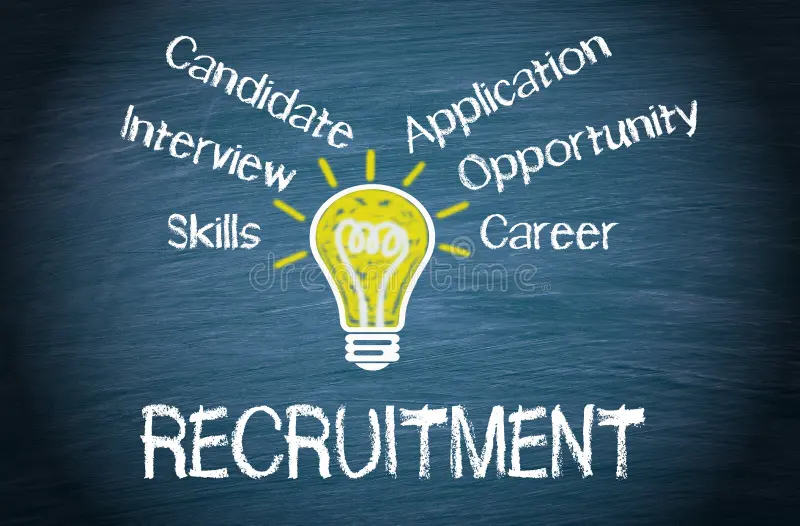| Heading | Subheading |
|---|---|
| I. Introduction | A. Definition of Recruitment |
| B. Importance in HR | |
| II. Types of Recruitment | A. Internal Recruitment |
| B. External Recruitment | |
| C. Third-Party Recruitment | |
| III. Recruitment Process | A. Job Analysis |
| B. Sourcing Candidates | |
| C. Screening and Shortlisting | |
| D. Interviews | |
| E. Selection | |
| IV. Tips for Effective Recruitment | A. Clear Job Descriptions |
| B. Utilizing Technology | |
| C. Building a Strong Employer Brand | |
| D. Employee Referral Programs | |
| V. Challenges in Recruitment | A. Talent Shortage |
| B. Diversity and Inclusion | |
| VI. Recruitment Metrics | A. Time to Fill |
| B. Cost per Hire | |
| VII. The Evolving Role of Technology in Recruitment | A. AI and Automation |
| B. Social Media Recruitment | |
| VIII. The Human Element in Recruitment | A. Personalized Approach |
| B. Cultural Fit Assessment | |
| IX. Recruitment in the Gig Economy | A. Flexibility and Adaptability |
| B. Virtual Hiring Challenges | |
| X. Navigating Remote Recruitment | A. Video Interviews and Assessments |
| B. Onboarding in a Virtual Environment | |
| XI. The Impact of COVID-19 on Recruitment | A. Remote Work Trends |
| B. Skills in Demand | |
| XII. Conclusion | A. Recap of Key Points |
What Is Recruitment In HR? (With Types, Process And Tips)
I. Introduction
A. Definition of Recruitment
Recruitment in HR refers to the process of identifying, attracting, and hiring qualified individuals for job openings within an organization.
B. Importance in HR
Delving into the crucial role recruitment plays in building a talented and effective workforce, ensuring the success and growth of a company.
II. Types of Recruitment
A. Internal Recruitment
Exploring the benefits and considerations of hiring from within the organization, fostering employee development and loyalty.
B. External Recruitment
Diving into the external hiring process, examining how organizations cast a wider net to bring fresh perspectives and skills into the team.
C. Third-Party Recruitment
Unveiling the role of recruitment agencies, headhunters, and other external entities in helping companies find the right talent.
III. Recruitment Process
A. Job Analysis
Breaking down the initial step of job analysis, where organizations define roles, responsibilities, and qualifications for a position.
B. Sourcing Candidates
Exploring the various channels organizations use to attract potential candidates, from job boards to social media.
C. Screening and Shortlisting
Detailing the crucial steps of reviewing applications, conducting initial assessments, and shortlisting candidates for further evaluation.
D. Interviews
Discussing the different interview formats, techniques, and their role in assessing candidates’ suitability for a position.
E. Selection
Highlighting the final steps of the recruitment process, including reference checks, negotiations, and extending job offers.
IV. Tips for Effective Recruitment
A. Clear Job Descriptions
Emphasizing the importance of well-defined job descriptions to attract candidates who align with the organization’s needs.
B. Utilizing Technology
Exploring the role of technology in streamlining the recruitment process, from applicant tracking systems to video interviews.
C. Building a Strong Employer Brand
Showcasing how a positive employer brand attracts top talent and fosters a positive company culture.
D. Employee Referral Programs
Highlighting the benefits of leveraging existing employees to recommend potential candidates, creating a network of trust.
V. Challenges in Recruitment
A. Talent Shortage
Addressing the ongoing challenge of finding skilled individuals, especially in industries with high demand for specific expertise.
B. Diversity and Inclusion
Examining the importance of promoting diversity and inclusion in the recruitment process to build a well-rounded and innovative team.
VI. Recruitment Metrics
A. Time to Fill
Exploring the metric of time to fill, measuring how efficiently an organization can fill a vacant position.
B. Cost per Hire
Delving into the financial aspect of recruitment, analyzing the cost incurred for each successful hire.
VII. The Evolving Role of Technology in Recruitment
A. AI and Automation
Discussing the integration of artificial intelligence and automation in the recruitment process, enhancing efficiency and decision-making.
B. Social Media Recruitment
Exploring the use of social media platforms for recruitment, tapping into a vast pool of potential candidates.
VIII. The Human Element in Recruitment
A. Personalized Approach
Emphasizing the importance of a human touch in recruitment, ensuring a personalized and positive candidate experience.
B. Cultural Fit Assessment
Highlighting the significance of assessing cultural fit to ensure candidates align with the organization’s values and work environment.
IX. Recruitment in the Gig Economy
A. Flexibility and Adaptability
Discussing how the gig economy has influenced recruitment, emphasizing the need for flexibility in hiring practices.
B. Virtual Hiring Challenges
Exploring the challenges associated with virtual hiring, from building rapport to accurately assessing candidates’ skills.
X. Navigating Remote Recruitment
A. Video Interviews and Assessments
Providing insights into the increased reliance on video interviews and assessments in the remote recruitment landscape.
B. Onboarding in a Virtual Environment
Addressing the challenges and solutions for onboarding new hires in a virtual environment.
XI. The Impact of COVID-19 on Recruitment
A. Remote Work Trends
Examining the accelerated shift towards remote work and its impact on recruitment strategies.
B. Skills in Demand
Identifying the skills that have gained prominence in the job market due to the changing landscape post-COVID-19.
XII. Conclusion
A. Recap of Key Points
Summing up the comprehensive exploration of recruitment in HR, emphasizing its dynamic nature and the evolving strategies organizations adopt to attract and retain top talent.





